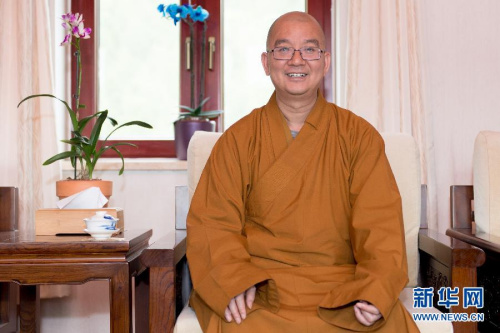
Photo of Xuecheng tanken in Beijing on May 6, 2015. (Photo: Xinhua/Wu Kaixiang)
At Longquan Monastery, a 1,000-year-old courtyard building at the foot of the mountains in Beijing's western suburbs, Venerable Master Xuecheng meets with friends and talks about Buddhism.
Wearing his traditional robe and cloth shoes, Xuecheng looks like the other monks in the monastery. However, the newly elected president of the Buddhist Association of China has a modern approach to developing and spreading Buddhism.
Xuecheng said at his election conference in April that Buddhist religious doctrine should positively and actively respond to modern technology and society.
In 2006, he became the first Buddhist monk to have a blog on the Chinese mainland. It has received more than 10 million visits.
In 2008, he used the Longquan Monastery website to promote Buddhist teachings.
And in 2011, Xuecheng launched microblogs in Chinese, English, French, German, Spanish, Korean, Japanese, Russian, Thai and Tibetan across multiple social media platforms, including Sina Weibo, Tencent and Twitter. The Weibo account has more than 300,000 followers.
"All the translation is done for free by about 300 domestic and foreign volunteers," he says.
He expects his microblogs to act as bridges between different countries, nationalities and cultures.
Xuecheng's online followers often seek both practical and spiritual guidance. "That covers careers, loneliness, and family harmony," he says.
"As they gain material wealth, Chinese people have a greater desire for inner enlightenment. Buddhist wisdom can help guide them through life, cope with all kinds of relationships, and improve their quality of life."
According to him, new media makes this process easier and faster.
"The Internet is filled with negative and false information that pollutes our spiritual space," he says. "Buddhism has an obligation to spread positive and healthy information through new media to purify our minds."
















































